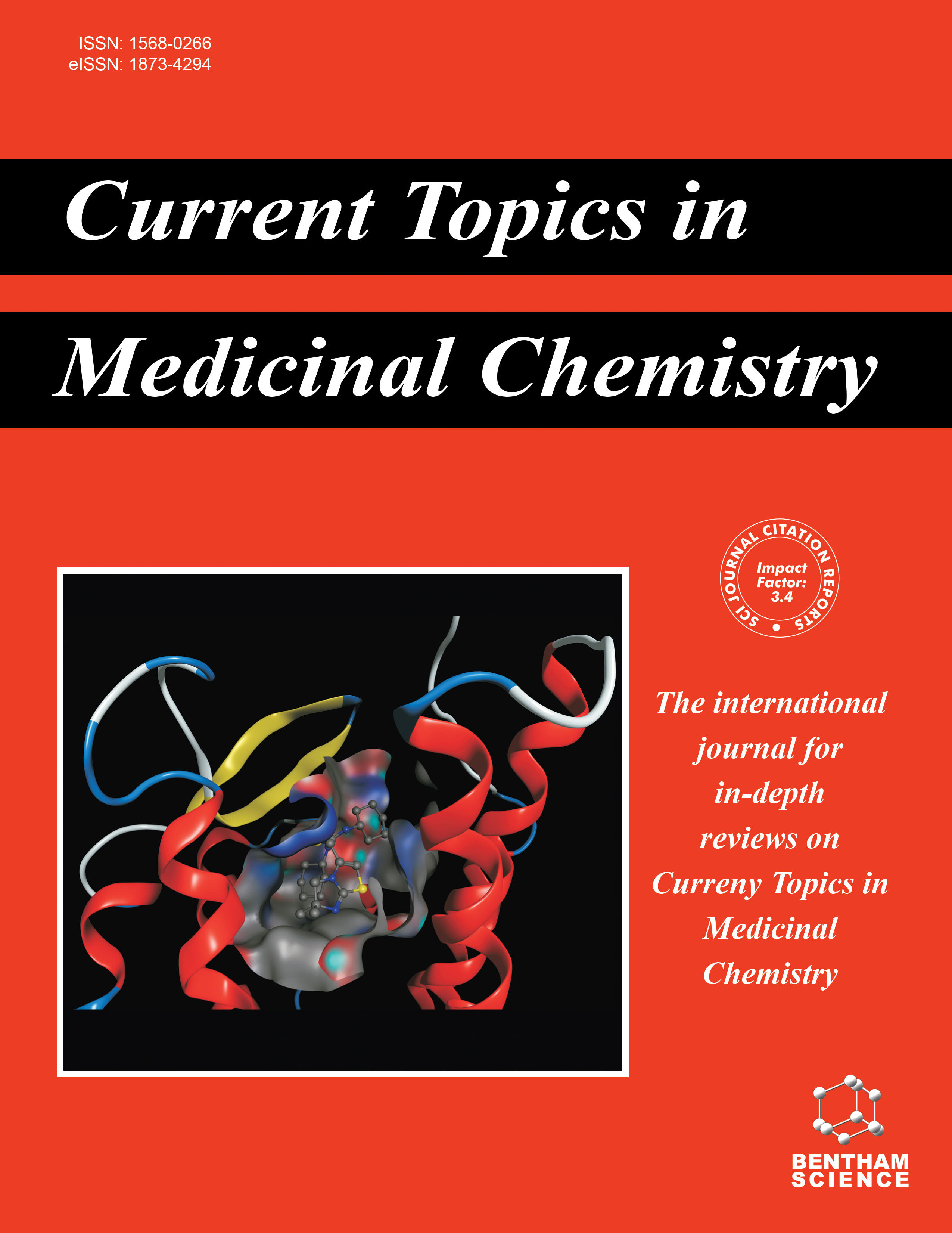- Home
- A-Z Publications
- Current Topics in Medicinal Chemistry
- Previous Issues
- Volume 5, Issue 12, 2005
Current Topics in Medicinal Chemistry - Volume 5, Issue 12, 2005
Volume 5, Issue 12, 2005
-
-
Design of Inhibitors for S100B
More LessS100B interacts with the p53 protein in a calcium-dependent manner and down-regulates its function as a tumor suppressor. Therefore, inhibiting the S100B-p53 interaction represents a new approach for restoring functional wild-type p53 in cancers with elevated S100B such as found in malignant melanoma. A discussion of the biological rational for targeting S100B and a description of methodologies relevant to the disc Read More
-
-
-
Cell Cycle Regulatory Kinase Modulators: Interim Progress and Issues
More LessSince a prior review of cell cycle inhibitors developed at the National Cancer Institute, (Sausville E.A.; Curr Med Chem -Anti Cancer Agents 2003, 3, 47) continued progress in the application of these molecules has been pursued. Evidence of preliminary activity on the part of flavopiridol in certain chronic leukemias has pointed to that disease area as of potential interest, but likely by affecting transcriptional regulation through non- Read More
-
-
-
Peptide Nucleic Acid Conjugates: Synthesis, Properties and Applications
More LessAuthors: Zhanna V. Zhilina, Amy J. Ziemba and Scot W. EbbinghausArtificial control of gene expression has great potential in the treatment of many human diseases, and peptide nucleic acids (PNAs) offer several potential advantages for silencing gene expression in mammalian cells. The pseudopeptide backbone of the PNA makes it resistant to enzymatic degradation, and PNAs bind complementary DNA and RNA with high affinity and specificity. PNAs are potentially leading agents for antig Read More
-
-
-
DNA Mismatch Repair Deficiency, Resistance to Cancer Chemotherapy and the Development of Hypersensitive Agents
More LessAuthors: Klaus Pors and Laurence H. PattersonDNA Mismatch Repair (MMR) deficiency results in resistance to platinating and alkylating agents, DNA minor groove binders, inhibitors of topoisomerases and antimetabolites. The cellular MMR pathway, involving hMLH1 and MSH2, detects and repairs DNA frame shifts replication errors and regulates recombination events. Tumour cells are able to cope with DNA damage caused by chemotherapy as long as the M Read More
-
-
-
Combining Cytotoxic and Immune-Mediated Gene Therapy to Treat Brain Tumors
More LessGlioblastoma (GBM) is a type of intracranial brain tumor, for which there is no cure. In spite of advances in surgery, chemotherapy and radiotherapy, patients die within a year of diagnosis. Therefore, there is a critical need to develop novel therapeutic approaches for this disease. Gene therapy, which is the use of genes or other nucleic acids as drugs, is a powerful new treatment strategy which can be developed t Read More
-
-
-
Carbohydrate Mimotopes in the Rational Design of Cancer Vaccines
More LessAuthors: Anastas Pashov, Marty Perry, Michael Dyar, Marie Chow and Thomas Kieber-EmmonsThe task of rationally designing vaccines that can effectively impact on the survival of cancer patients remains challenging. Monoclonal antibodies and T cell receptors have proven to be viable templates for the application of pharmacophore design principles to develop antigens and immunogens as these immune system molecules recognize a variety of sequentially and structurally unrelated ligands. This structural in Read More
-
Volumes & issues
-
Volume 25 (2025)
-
Volume 24 (2024)
-
Volume 23 (2023)
-
Volume 22 (2022)
-
Volume 21 (2021)
-
Volume 20 (2020)
-
Volume 19 (2019)
-
Volume 18 (2018)
-
Volume 17 (2017)
-
Volume 16 (2016)
-
Volume 15 (2015)
-
Volume 14 (2014)
-
Volume 13 (2013)
-
Volume 12 (2012)
-
Volume 11 (2011)
-
Volume 10 (2010)
-
Volume 9 (2009)
-
Volume 8 (2008)
-
Volume 7 (2007)
-
Volume 6 (2006)
-
Volume 5 (2005)
-
Volume 4 (2004)
-
Volume 3 (2003)
-
Volume 2 (2002)
-
Volume 1 (2001)
Most Read This Month
Article
content/journals/ctmc
Journal
10
5
false
en


